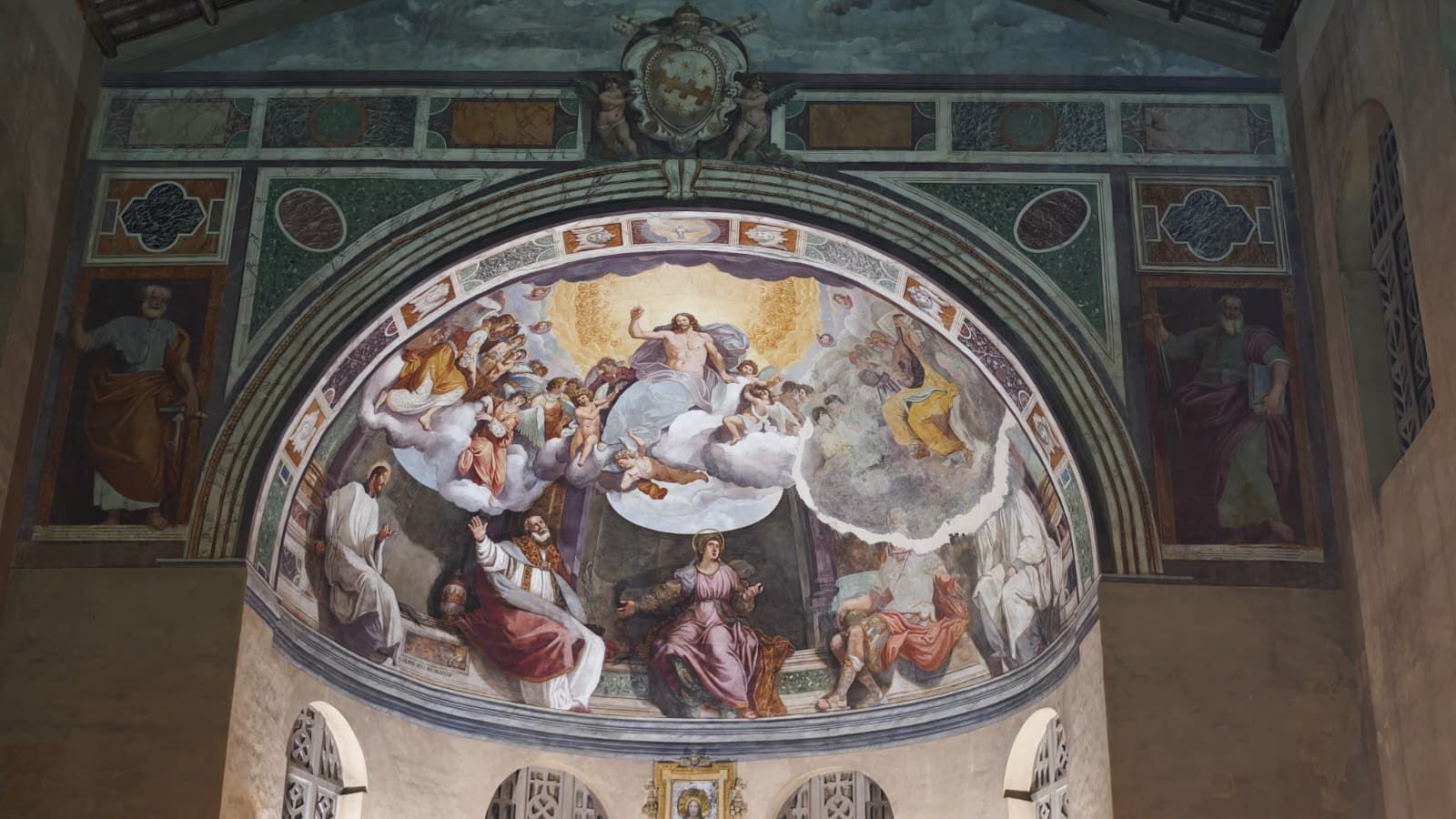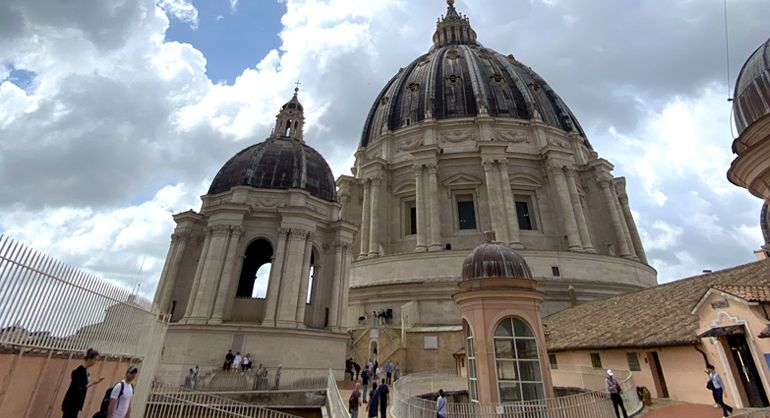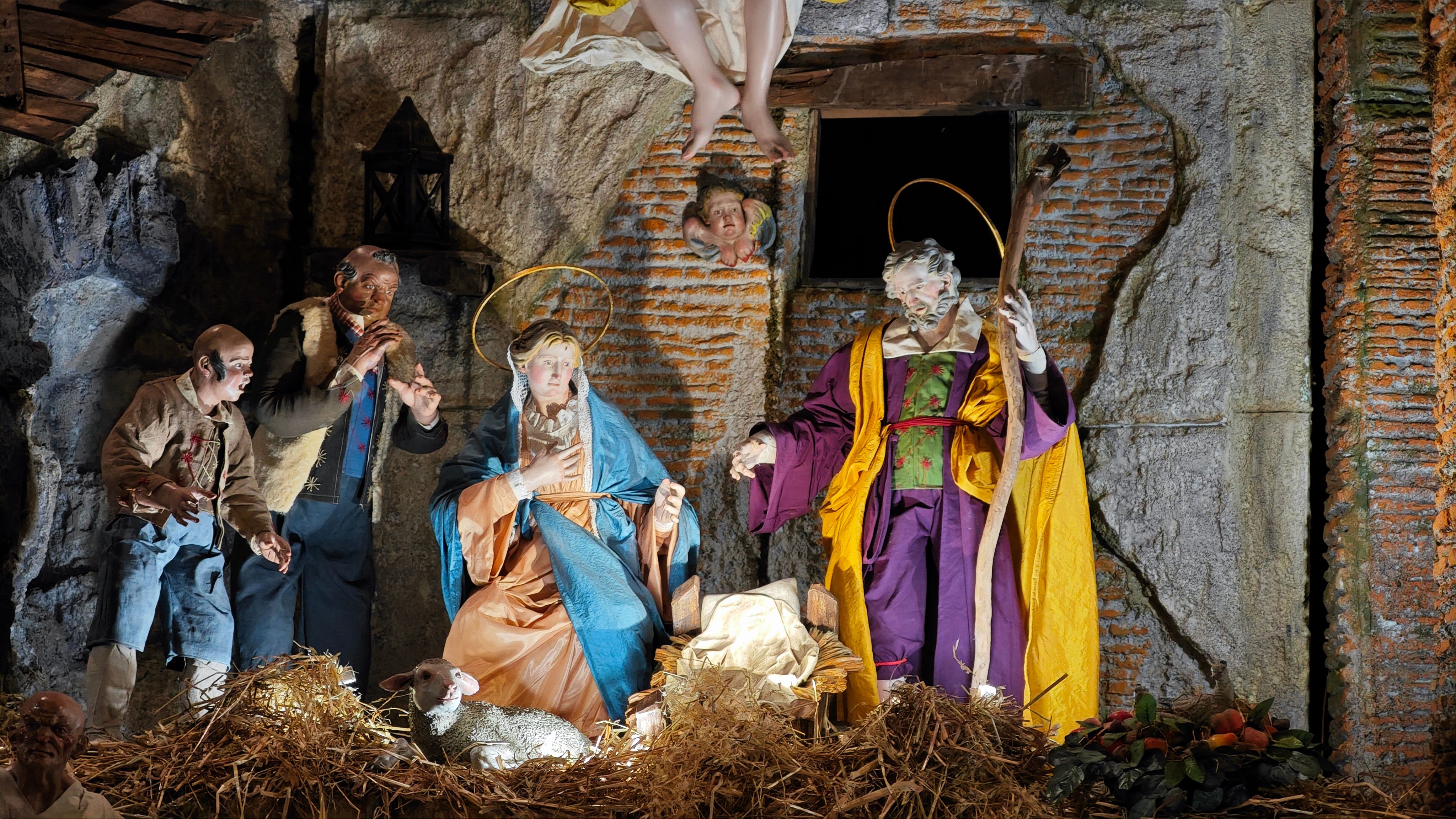Twenty young apprentice artisans — marble workers and stonecutters, masons, plasterers and decorators, carpenters, mosaicists and blacksmiths — are ready to inherit the ancient and precious techniques handed down for the care of the world’s largest basilica.
The fourth edition of the School of Arts and Crafts of the Fabbrica di San Pietro was inaugurated yesterday (Monday, October 20) at the Palazzo della Canonica, headquarters of the Fabbrica.
There are 20 new young apprentice artisans: 13 women and 7 men, among marble workers, masons, plasterers, decorators, carpenters, mosaicists and blacksmiths, ready to learn the ancient and precious techniques transmitted for the preservation of the world’s largest basilica, the heart of Christianity. Some are under twenty years old and come from different parts of Italy, two from abroad, from Ecuador.
Their dream? “To make our dream a lifelong profession”, they said together, taking turns to speak briefly.
“You cannot work well without thinking well and without having a well-disposed heart”, said Cardinal Mauro Gambetti, Archpriest of St. Peter’s Basilica and President of the Fabbrica, explaining the meaning and spirit of the School of Arts and Crafts. The School, he recalled, “aims to transmit not only professional skills but also human ones, because each of us is responsible for cultivating the talent received, in order to give life to a community of fraternity and peace. In the meeting between craft and humanity, the highest level of expression and work is achieved”.
The School offers not only technical training but also “an encounter with oneself and one’s deepest dimension”, the Cardinal added, urging the students: “Make the best use of what you are given”.
Fr. Francesco Occhetta, Director of the School of Arts and Crafts and Secretary General of the Fratelli Tutti Foundation, described it as born from a dream and as a shared gift. Addressing the young people, he quoted composer Gustav Mahler: “Tradition is not the worship of ashes but the preservation of fire”. He highlighted the living meaning of the training path. He also recalled Michelangelo’s advice when facing raw material — the importance of removing, as one does when sculpting from stone: “This applies to art, but also to your lives, to better understand the design that awaits each of you”.
Emilia Rio, Chief Operating Officer of the Fabbrica, called the decision to embark on the School’s path “a courageous yet highly meaningful choice” in an increasingly digital and less manual age. Her wish for the students was above all to “learn to look at beauty”.
Assunta Di Sante, Scientific Director of the School, reminded that this formative experience “was born from the need to transmit knowledge and skills”, emphasizing that the School is not only a place of learning but also a moment of safeguarding art through the hands. The Fabbrica has reopened a chapter that has always belonged to it: in the 18th century there existed the Pontifical Art Studio. Study, observation, and hands-on work remain the guiding principles of its educational method.
“The beauty of the Basilica cannot be separated from the beauty of the Gospel. That art speaks of faith”, said journalist Piero Damosso during the evening presentation, announcing the publication of the first manual of the School of Arts and Crafts.
Theory and practice will alternate continuously during the six hundred total hours of the course. In each discipline, the workshop is the heart of learning, where knowledge becomes experience. Knowledge grows in the relationship between teacher and learner and in the precision of the gesture required by each craft. It is a community of practice, where dialogue and exchange from diverse and complementary perspectives hold exceptional value.
The knowledge gained will not remain confined to the Fabbrica but will accompany the students beyond St. Peter’s Basilica, wherever they have the opportunity to work.
The School of Arts and Crafts of the Fabbrica di San Pietro received the “Europa Nostra” award from the European Commission on October 13 in Brussels, in the category “Education, Training and Skills.” Among the 30 awardees from 24 countries, the Fabbrica was recognized for excellence in the conservation and promotion of cultural heritage and represented Italy, though located in Vatican City. The award, a bronze medallion, was presented at the end of the ceremony in the presence of architect Alessandra Vittorini, representing “Europa Nostra.”



